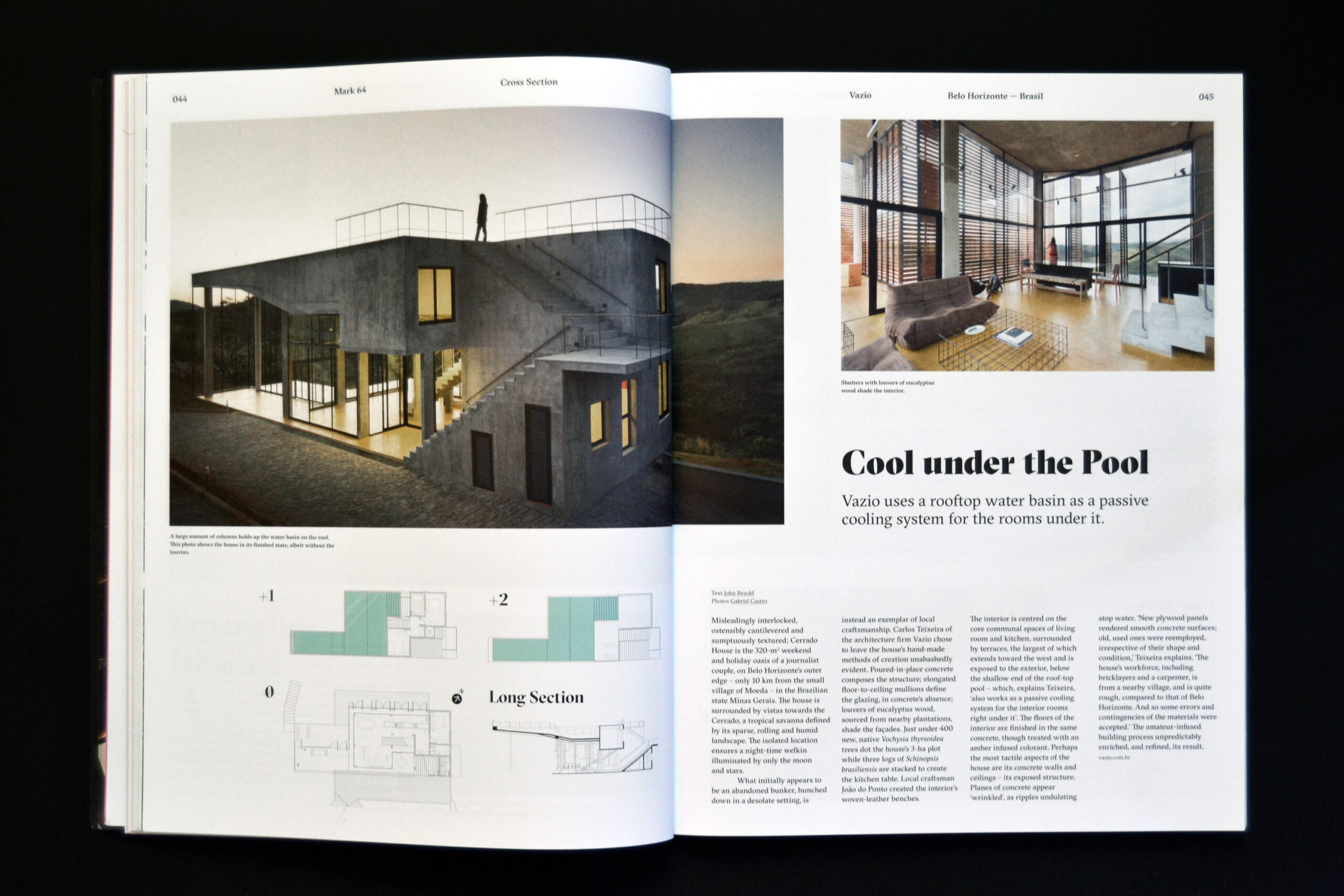Misleadingly interlocked, ostensibly cantilevered, and sumptuously textured; Cerrado House is the 320 m2 weekend and holiday oasis of a journalist couple, on Belo Horizonte’s outer edge–near to Moeda–in the Brazilian state Minas Gerais. Surrounded by only vitas toward the Cerrado–defined by its sparse, rolling, and humid landscape–its isolated location, 10 km from Moeda, ensures a nighttime welkin, illuminated by only the moon and stars. Just under 400 new, yet native Vochysia thyrsoidea trees dot the house’s 3 ha plot; three logs of Schinopsis brasiliensis are stacked to create the kitchen table; local craftsman João do Ponto created the interior’s woven-leather benches. What initially appears to be an abandoned bunker, hunched down in a desolate setting, is instead an exemplar of local craftsmanship; its hand-made methods of creation are, unabashedly evident. Poured in place concrete composes the house’s structure; elongated floor to ceiling mullions define the glazing, in concrete’s absence; accordioned louvers of Eucalyptus, sourced from nearby plantations, shade the northwestern façade. The interior is centered on the core communal spaces of living room and kitchen, which terraces tentacle off of, the largest of which extends toward the west and is exposed to the exterior, below the shallow end of the roof-top pool–which, explains Carlos Teixeira of Vazio S/A, ‘also works as a passive cooling system for the interior rooms right under it.’ The floors of interior rooms are finished in the same concrete, though treated with an amber-infused colorant. Perhaps the most tactile aspects of the house are its concrete walls and ceilings–its exposed structure. Planes of concrete appear ‘wrinkled’, as ripples undulating atop water. ‘New plywood panels rendered smooth concrete surfaces; old, used ones were reemployed, irrespective shape and condition,’ Teixeira explains. ‘The house’s workforce (bricklayers, carpenter, etc.) is from a nearby village, and is quite rougher, when compared to that of Belo Horizonte. And so some errors and contingencies of the materials (and the unskilled workers) were accepted.’ The amateur-infused building process, unpredictably enriched, and refined, its result.
Also digitally published at frameweb.com.
‘Vazio in Minas Gerais, Brazil,’ Mark Magazine, No. 64
2016
- Mark Magazine
- Publisher: Frame Publishers, Amsterdam
- ISSN: 1574-6453

×